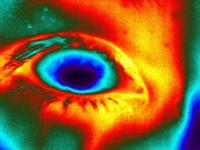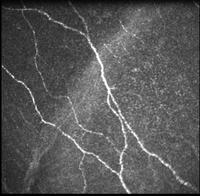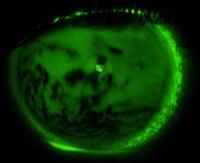Current research
The Murphy Lab for Experimental Optometry (MLEO) undertakes laboratory-based and clinically-based studies in a multi-disciplinary environment to investigate the interactions between the anterior ocular surface, eyelids and tear film. More specifically, our research looks at how the tear film, the exposed surface of the eye, the sensory nerves in the cornea, and the eyelids interact in both normal and abnormal circumstances – in the normal healthy eye, and when affected by contact lens wear and ocular surface disease. We also look at anterior segment anatomy to investigate the action of the lids on the eye, and the normal variation in ocular surface shape.
The lab develops new instruments and methods of investigation to address these large questions, with the ultimate goal of understanding how best to help patients who experience discomfort when wearing contact lenses or as a result of problems with their tear film quality or quantity.
We collaborate nationally and internationally with fellow researchers, and with industrial partners.
A list of recent publications in Google Scholar can be found here.
Evaporimetry
To better understand the effect of contact lenses on the tear film, and on changes in hydration of the worn contact lens over a normal wear period, as well as in the normal and abnormal situation, we are investigating tear evaporation from the ocular surface. Initially we are using the Delfin evaporimeter to look at in vitro evaporation from soft hydrogel and silicon hydrogel lenses, and are extending this into in vivo studies. We are also reviewing current evaporation methods with the aim of developing a new instrument that will be able to combine with other methods of ocular surface assessment.
Thermal Imaging
 Ocular surface temperature has been observed for many years, but until recently the technology limited the speed of assessment. Modern instruments produce a large amount of data, and the challenge is to find useful ways to manipulate this data. Our lab looks at new methods of data management, and applies them to investigating the change in ocular surface temperature in normal subjects, in contact lens wearers, in dry eye subjects, and as a tool to assess other instruments, such as an aesthesiometer or evaporimeter.
Ocular surface temperature has been observed for many years, but until recently the technology limited the speed of assessment. Modern instruments produce a large amount of data, and the challenge is to find useful ways to manipulate this data. Our lab looks at new methods of data management, and applies them to investigating the change in ocular surface temperature in normal subjects, in contact lens wearers, in dry eye subjects, and as a tool to assess other instruments, such as an aesthesiometer or evaporimeter.
Cornea Sensation
 We are interested in understanding the foundational aspects of ocular surface sensation, such as normal variation over the day or temporal/spatial summation of stimulation, as well as the interaction of corneal sensation with the tear film. We have previously developed an internationally-adopted instrument (the Non-Contact Corneal Aesthesiometer) and are working on modifications to this design to allow more extended stimulation modes.
We are interested in understanding the foundational aspects of ocular surface sensation, such as normal variation over the day or temporal/spatial summation of stimulation, as well as the interaction of corneal sensation with the tear film. We have previously developed an internationally-adopted instrument (the Non-Contact Corneal Aesthesiometer) and are working on modifications to this design to allow more extended stimulation modes.
Dry Eye and the Environment
 The modern office working environment, with centralised control over temperature, humidity and airflow, presents a significant challenge to the worker using a computer. Decreased blink-rates, alongside these environmental factors, provokes increased evaporation from the ocular surface and symptoms of dry eye, that combine to reduce quality of life and work performance. Initially we are attempting to describe the incidence of these symptoms, to develop new methods of managing the problem. This work is in collaboration with Mirjam van Tilborg (Utrecht) and Dr Katharine Evans (Cardiff).
The modern office working environment, with centralised control over temperature, humidity and airflow, presents a significant challenge to the worker using a computer. Decreased blink-rates, alongside these environmental factors, provokes increased evaporation from the ocular surface and symptoms of dry eye, that combine to reduce quality of life and work performance. Initially we are attempting to describe the incidence of these symptoms, to develop new methods of managing the problem. This work is in collaboration with Mirjam van Tilborg (Utrecht) and Dr Katharine Evans (Cardiff).
Ocular surface anatomy
Successful fitting of contact lenses, particularly large diameter rigid lens designs, needs a close association between the shape of the contact lens and the shape of the anterior ocular surface. Using eye mould impression techniques, we have developed a database of ocular surface shape which can be manipulated to derive an average ocular surface shape for different refractive errors. This work is in collaboration with Menicon (Japan) and Dr Katharine Evans at Cardiff University.
